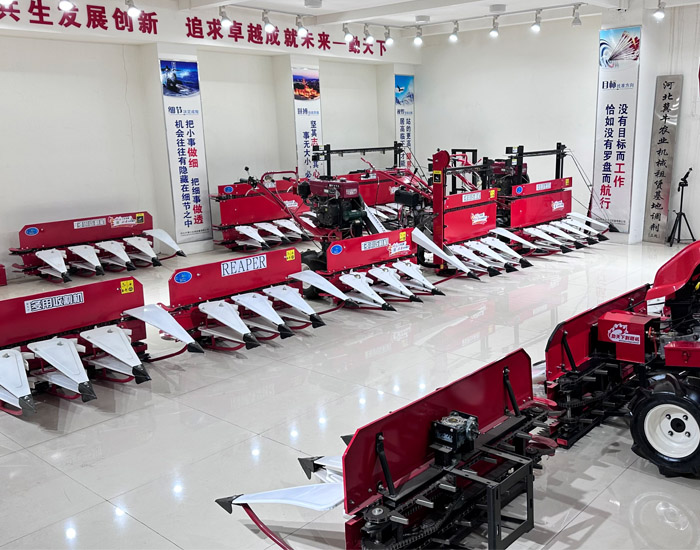Wheat Harvesting Machines for Efficient Cutting and Binding Solutions
The Evolution of Wheat Cutters and Binder Machines
Agriculture, the backbone of human civilization, has witnessed remarkable transformations over the centuries. Among the most significant advancements in agricultural technology is the invention and evolution of wheat cutters and binder machines. These innovative machines have revolutionized the way wheat is harvested, making the process faster, more efficient, and less labor-intensive.
Historical Context
Traditionally, wheat harvesting was a labor-intensive process that required extensive manpower and time. Farmers relied on sickles and scythes to cut wheat, which was not only physically demanding but also time-consuming. As the demand for wheat flour increased due to population growth and urbanization, there was an urgent need for more efficient harvesting techniques. The first mechanical reapers were developed in the early 19th century, marking the beginning of a significant shift in agricultural practices.
The Advent of the Wheat Cutter
The wheat cutter, also known as a reaper, was one of the first machines designed specifically for harvesting grain. Patrick Bell, a Scottish inventor, is credited with creating the first practical reaper in 1826. However, it was Cyrus McCormick who revolutionized the reaper industry with his version, patented in 1834. McCormick's reaper was a horse-drawn machine that greatly improved harvesting efficiency, allowing a single farmer to cut more wheat in an hour than a dozen men with sickles.
The introduction of the wheat cutter significantly reduced the time and labor required for harvesting. As farms grew larger and economies of scale became more important, the demand for more sophisticated machinery increased. Farmers were quick to adopt these machines, leading to increased productivity and the ability to cultivate larger areas of land.
The Role of Binder Machines
While wheat cutters excelled at cutting the grain, the next challenge was the bundling and securing of the harvested wheat stalks. This need led to the development of binder machines in the late 19th century. A binder machine works by cutting the wheat and simultaneously tying it into sheaves, which are bundles of harvested grain. This innovation was crucial in simplifying the harvesting process further and reducing the risk of grain loss.
wheat cutter and binder machine

The first binder machines were labor-intensive and often required multiple operators. However, as technology progressed, manufacturers developed automatic binders that could handle the entire process more efficiently. The introduction of mechanized binders allowed one operator to do the work that once required several hands, further enhancing productivity on farms.
Modern Innovations
Today’s wheat cutters and binder machines are a far cry from their early predecessors. With the advent of advanced engineering and technology, modern harvesters, often referred to as combine harvesters, incorporate the functions of both cutting and binding into one integrated machine. These machines are equipped with powerful engines, cutting-edge sensors, and automated systems that enable precision harvesting.
Modern combine harvesters can operate in a variety of conditions, adjusting to the terrain and weather, while efficiently separating the wheat grains from the chaff. The use of GPS technology and data analytics has further optimized harvesting performance, allowing farmers to gather data on crop yields and soil health, which can inform future planting decisions.
Environmental and Economic Impact
The introduction of wheat cutters and binder machines has not only revolutionized the way wheat is harvested but has also had profound implications for the agricultural economy. Increased efficiency has led to higher yields and lower production costs, contributing to global food security. Furthermore, the mechanization of agriculture has transformed rural economies, offering job opportunities in machine operation and maintenance.
However, the reliance on technology also raises concerns regarding sustainable practices and the environmental impact of large-scale mechanized farming. As farmers strive to balance efficiency with ecological responsibility, innovations such as eco-friendly harvesting technologies are being explored.
Conclusion
The evolution of wheat cutters and binder machines represents a significant chapter in the story of agriculture. From manual harvesting with simple tools to the sophisticated machines of today, these advancements have improved efficiency, increased production, and transformed rural economies. As the agricultural landscape continues to evolve with technology, the journey of wheat harvesting is one of innovation, adaptation, and a testament to human ingenuity in the pursuit of feeding the world.
Latest news
-
When to Upgrade Your Old Forage HarvesterNewsJun.05,2025
-
One Forage Harvester for All Your NeedsNewsJun.05,2025
-
Mastering the Grass Reaper MachineNewsJun.05,2025
-
How Small Farms Make Full Use of Wheat ReaperNewsJun.05,2025
-
Harvesting Wheat the Easy Way: Use a Mini Tractor ReaperNewsJun.05,2025
-
Growing Demand for the Mini Tractor Reaper in AsiaNewsJun.05,2025







